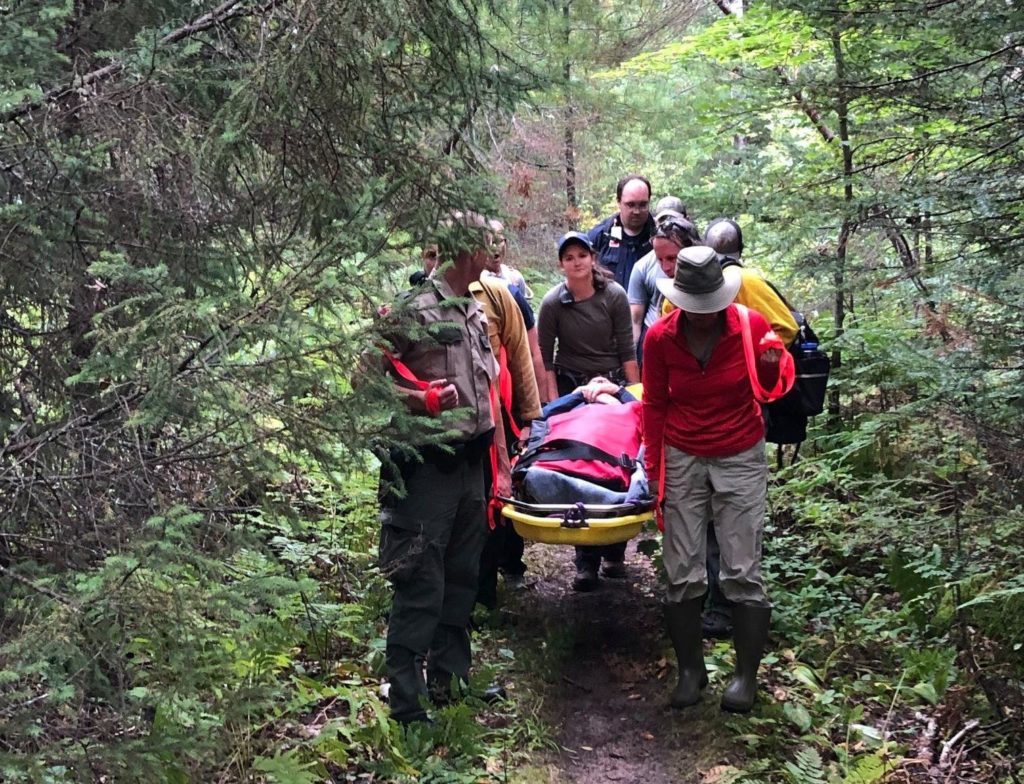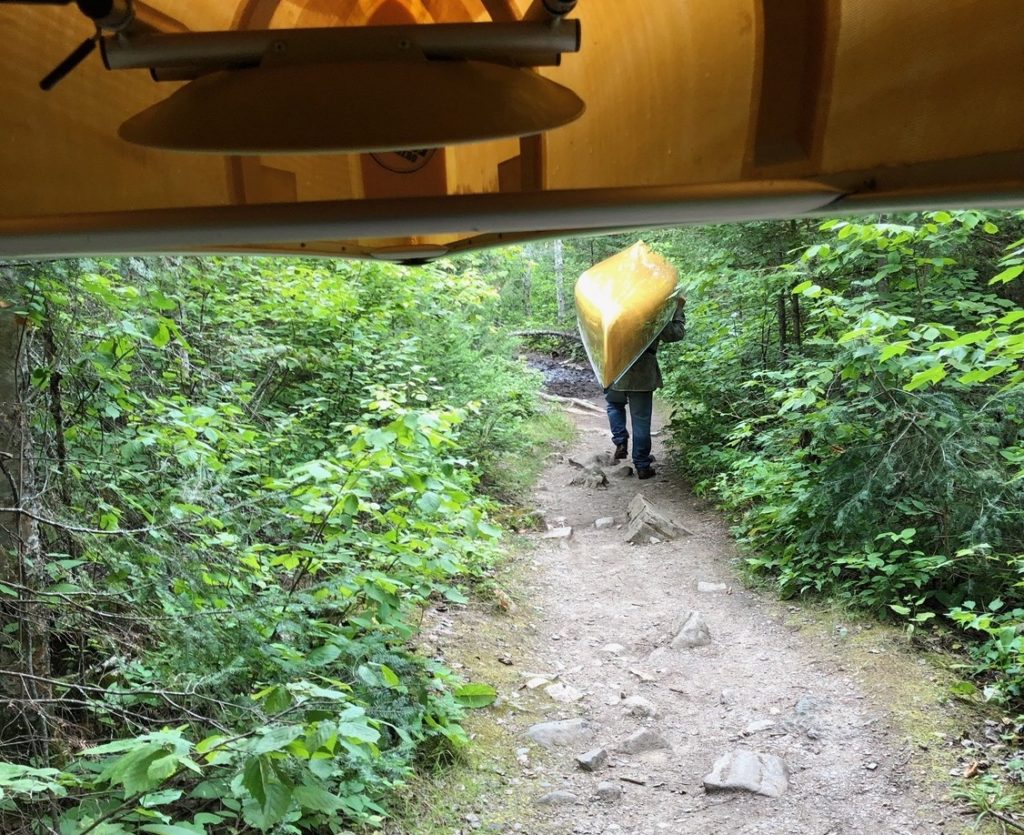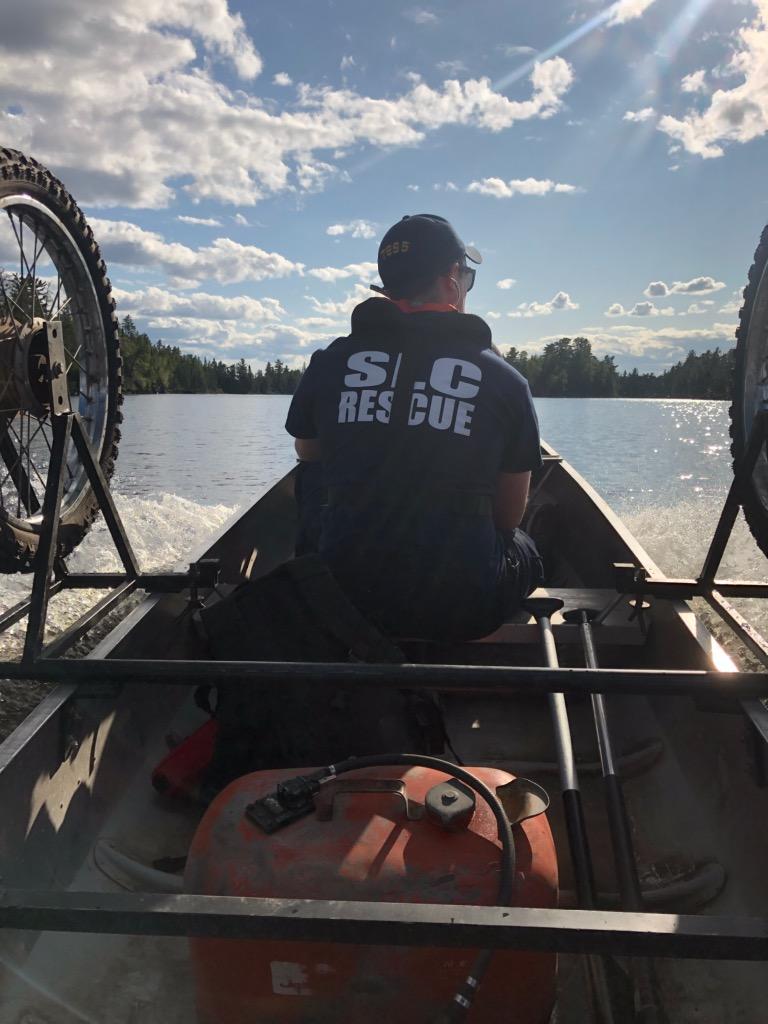
The all-volunteer St. Louis County Rescue Squad responds to emergency incidents all across northern Minnesota, including many in the Boundary Waters Canoe Area Wilderness. When they wrapped up their review in January, the organization reported that it had responded to 542 calls last year — 100 more than any previous year. Their 77 members volunteered 28,093 hours, surpassing the previous record by almost 3,000 hours.
Their operations fall into three basic categories: woods, water, and roads. Woods and waters made up 252 of the calls, with roads comprising another 188. “Since the Rescue Squad was founded in 1958, the total call load has been approximately 40 percent wilderness related (searches and rescues), 25 percent public safety (motor vehicle accidents and medical emergencies), and 35 percent split between water and miscellaneous calls,” the squad says.
All the volunteer crew members are highly-trained in search, navigation, water operations, and many other wilderness skills. They have a fleet of vehicles and watercraft that allow them to conduct difficult operations. Many of their calls are in the Boundary Waters Canoe Area Wilderness, which often requires all their skills to help people in need.
Last “summer has seen a nearly continuous string of search-and-rescue calls in the Boundary Waters, many of them based out of Moose [Lake] Landing,” the Rescue Squad wrote in August. They thanked LaTourell’s Resort on Moose Lake for letting them use their facilities numerous times, giving motor rides to Prairie Portage “at all hours” to get the crew to popular Basswood Lake.

Canoe country rescues
The Boundary Waters was particularly busy, with squad members conducting 18 operations in the wilderness in 2019, considerably higher than the five-year average of 12. But they urged restraint in reading too much into the numbers.
“We saw a few more accidental SPOT activations, a whopping lightning strike, a subject who did not wish to be found, and we rescued the same person twice!” They reported. “While 18 versus 12 is a 50-percent jump, that’s a pretty small dataset on which to draw any inferences. We rescue in the Boundary Waters every year, often for people who make poor decisions. It’s not unusual.”
The crew’s efforts were publicized last summer when they responded to a call of Girl Scouts in the Boundary Waters who had been hit by lightning during a major storm the night of July 26. Initial reports were worrying, but the responders found them in good condition and got them out of the wilderness safely.
In 2015 the crew earned an “Enduring Service Award” from the U.S. Forest Service. “The dedication and professionalism that this rescue squad has is unmatched anywhere,” said Gus Smith, the Kawishiwi District Ranger for the Superior National Forest, who came to the job from Yosemite National Park, according to the Duluth News Tribune. “I thought I knew a lot about wilderness rescue. But these guys (in Ely) are the real professionals. They deserve this award.”

Complex causes
The record-breaking year has many possible reasons, and the Rescue Squad urged the public not to jump to conclusions.
For one thing, there were major winter storms that caused a lot of calls, with snowstorms sandwiching an ice storm at the end of November. The crew ran 38 calls in one 48-hour period from November 30 to December 1. A storm on May 8 found them responding to 20 calls in one night, including an extended search and recovery for a crashed plane.
The squad also says dispatchers are paging them more often, thanks to new protocols and technology that make the decision easier. There are several other contributing factors, and while the rescue squad is all volunteers, its budget is managed by the St. Louis County sheriff’s office. Sheriff Ross Litman told the Duluth News Tribune that it’s also probably because of the crew’s excellent reputation.
“Due to the expertise of the personnel and the equipment they have at the ready,” Litman said, “the rescue squad has become a regional asset within Northeastern Minnesota and beyond.”
Quetico comparison
Most search-and-rescue operations in Quetico Provincial Park, across the international border from the Boundary Waters are handled by the Ontario Provincial Police. There is a detachment based in Atikokan on the edge of Quetico.
Quetico superintendent Trevor Gibbs told an Ely audience in 2015 that park rangers often support rescue operations. “In the last two seasons that I’ve been around, we have had multiple rescues and serious, even critical rescues,” said Gibb reported by the Timberjay. “Primarily, the Ontario Provincial Police respond to calls for help, but often times they require assistance from the park’s rangers because of the special nature of the landscape. Our wardens know the lakes and quite often we can get a plane and our staff there quicker to help people.”
Notable emergencies in Quetico in 2019 included a young camper who ran away from his campsite on the American side and spent several nights alone in Quetico before being found. In June, police responded to an emergency near Cache Bay Ranger Station where an American man ultimately died of natural causes.

